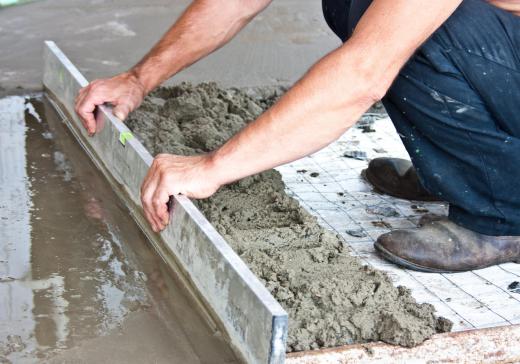Concrete installers often use steel rods, or rebar, to add structural support to concrete walkways or buildings. In these types of reinforced concrete applications, the location of the rebar within the concrete can have a major impact on durability and performance. Concrete cover, which is the distance between the top of the rebar and the top of the finished concrete, can help installers determine correct rebar placement. Insufficient concrete cover often leads to damage, which not only influences the appearance of the concrete, but also its long-term function.
The amount of concrete cover required for each project can vary based on a number of different factors. Seismic activity rates within a specific region can alter concrete cover recommendations, as can the local weather conditions. The thickness of the cover can also be influenced by the type of structure being built or the type of concrete mixture. Finally, different types of concrete cover specifications are required for indoor projects versus those that are outdoors.

Many municipalities include concrete cover requirements in local building codes. Contractors refer to these codes when constructing a new project, and the concrete cover may be measured or inspected by local authorities. General thickness requirements range from 15 to 55 mm (0.59 to 2.16 inches) throughout different parts of the world. Some areas may also use a depth plus model, which means that the concrete cover should measure the same depth as the thickness of the rebar plus a specific number of added millimeters. When local codes are unavailable or not applicable, builders often rely on industry standards to determine the best cover thickness.

While it may appear that a thicker cover is always a good option, this is not always the case. It's critical for builders to err with a cover that's too thick and one that's too thin. A thick concrete cover can lead to cracks along the surface of the concrete, while a cover that's too thin leaves the rebar vulnerable to weather exposure. Some builders add stainless steel or fiberglass reinforcements within the cover to add strength and meet local codes without exposing the rebar to damage.
Proper cover thickness offers a number of advantages to concrete homeowners or maintenance personnel. The cover protects the steel rebar from heat and fire exposure, which minimizes the risk of damage during an emergency. Well-placed rebar is also less likely to suffer from rust or corrosion, which helps to prevent staining on the surface of the concrete.
